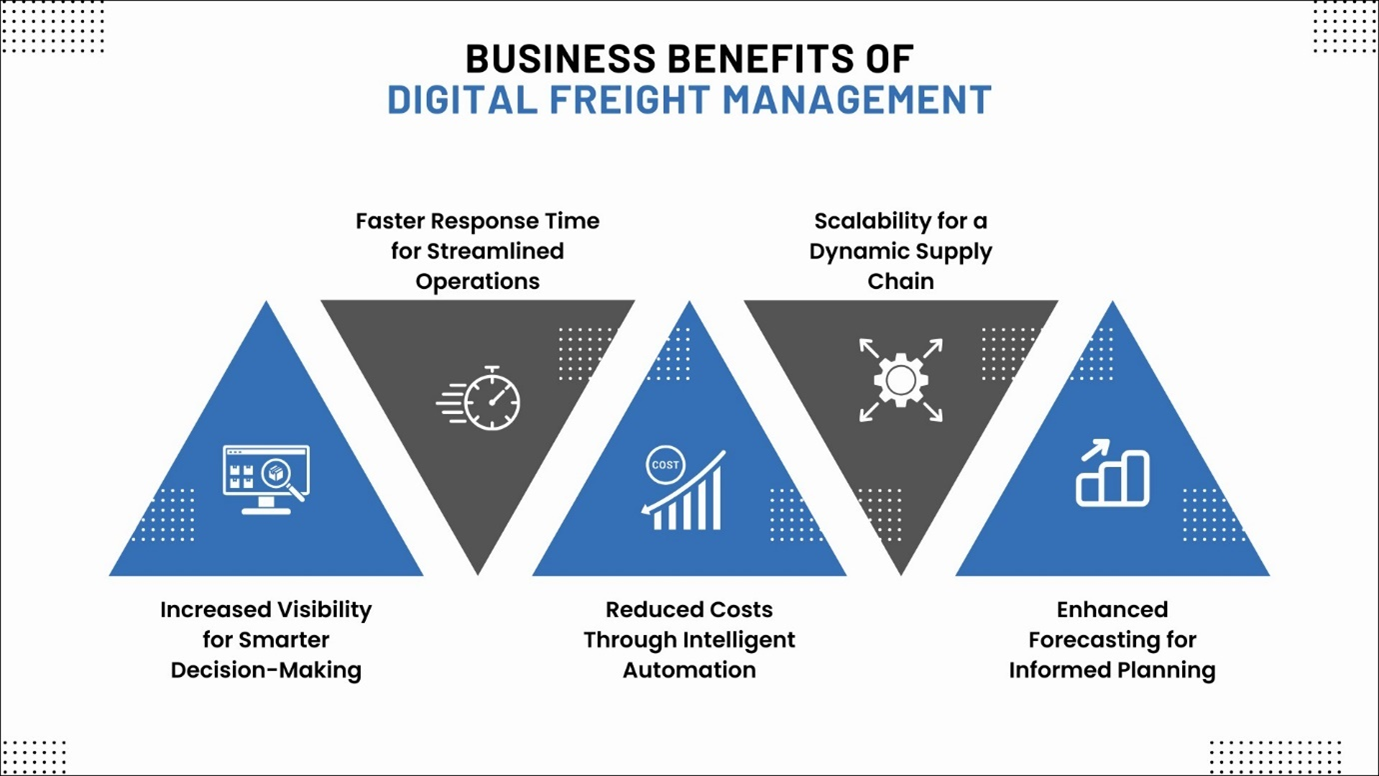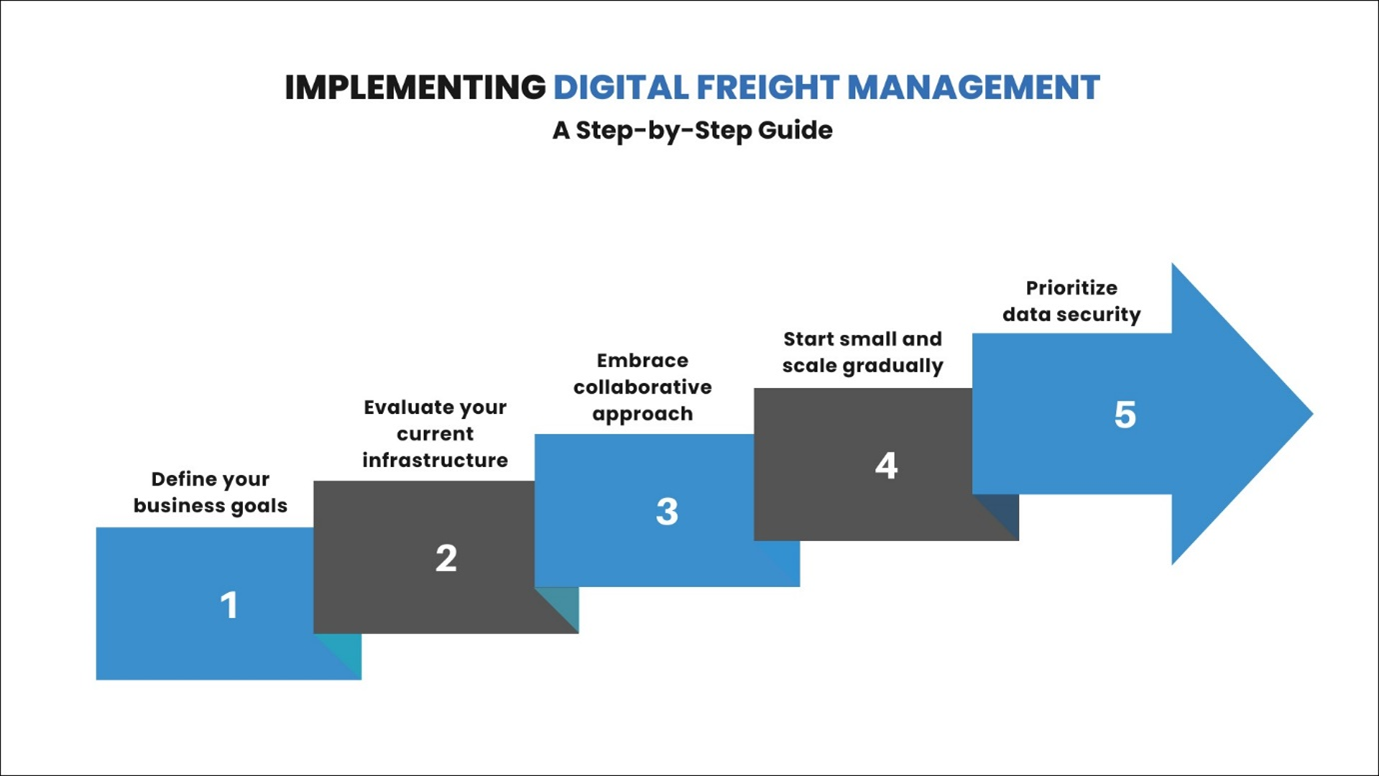Did you know ocean shipping accounts for about 90% of global shipments? In 2010, maritime transport covered a massive 60 trillion tonne-kilometers, and experts predict it could quadruple by 2050. Not only that, but global road freight is also increasing, expected to grow from 6.388 trillion tonne-kilometers in 2010 to around 30 trillion tonne-kilometers by 2050. [Source: Freight Connections]
Despite this growth, many freight forwarders still rely on manual or outdated systems like Excel for data management, leading to inefficiencies in handling large amounts of data.
The good news? Digital Freight Management (DFM) is here to help! DFM uses the latest innovative technology to streamline freight management processes, reduce costs, and provide real-time visibility into operations.
This blog aims to guide you through understanding and implementing DFM, whether you’re an experienced logistics professional or just starting. We’ll cover the benefits, technologies, and best practices to help you succeed in the digital freight world.
Business Benefits of Digital Freight Management
- Increased Visibility for Smarter Decision-Making: DFM with real-time IoT tracking offers unparalleled transparency. It lets you monitor shipment location and quality, enabling proactive responses to potential disruptions. Built on Cloud platforms, DFM provides centralized access to shipment data, carrier rates, and other vital information, fostering collaboration across your supply chain. This transparency enhances adaptability and strengthens relationships with carriers, suppliers, and partners. Additionally, you can mitigate compliance risks and reputational damage by gaining deeper insights into your partners’ ESG (Environmental, Social, and Governance) practices.
- Faster Response Time for Streamlined Operations: DFM consolidates carrier data, allowing instant quote generation and comparison. Automates back-office processes, like document handling, and expedites connections with 3PLs. With the power of a cloud platform, DFM offers centralized data and empowers you to access data independently, eliminating reliance on manual information retrieval. Moreover, chatbots provide prompt customer support, prioritize complex requests for human intervention, and offer quick, informative answers.
- Reduced Costs Through Intelligent Automation: Offering instantaneous access to quotes from multiple carriers, DFM ensures you secure the most cost-effective option. DFM, built on Machine learning-driven AI algorithms, tailors solutions to each shipment. It further facilitates optimizing pricing. Extensive automation eliminates manual tasks, reducing overhead and enabling lower service costs. Cloud-based solutions minimize administrative burdens, freeing your team to focus on strategic initiatives. This combined effect translates to significant cost savings for you.
- Scalability for a Dynamic Supply Chain: DFM prioritizes flexibility to adapt to ever-changing market conditions. Its reliance on digital technologies facilitates quicker scaling up or down than traditional, manual solutions. The cloud’s agility allows for rapid onboarding of new carriers, services, clients, and their removal when needed. This translates to greater control and convenience for your business. Additionally, cloud-based tools empower you to adjust carrier relationships as your supply chain evolves, ensuring a dynamic and resilient operation.
- Enhanced Forecasting for Informed Planning: DFM systems capture vast amounts of data, empowering you to leverage powerful forecasting tools like predictive analytics. Overcoming data discovery challenges through extensive digitization gives you detailed insights into your supply chain and its trends. This readily accessible information enables you to identify emerging trends sooner, generate reliable forecasts, and build a more adaptable and resilient supply chain.
Implementing Digital Freight Management: A Step-by-Step Guide
Optimizing your logistics operations through strategic implementation of Digital Freight Management (DFM) requires a well-structured approach. This comprehensive guide breaks down the process into critical steps, outlining best practices to navigate each stage.
- Define your business goals and needs: Start by identifying the specific challenges you aim to address. Try to find answers to questions like: are you burdened by inefficient carrier selection, delayed shipments, rising costs, or limited visibility into your supply chain? Determining these pain points will help you with technology selection and ensure you choose solutions that directly address your unique needs.
- Evaluate your current infrastructure: Analyze your existing processes, infrastructure, and data management capabilities. Assess their compatibility with potential DFM solutions and identify areas of improvement. Additionally, establish clear success metrics aligned with your goals. These could include reduced transportation costs, improved shipment visibility, faster delivery times, or enhanced operational efficiency. Having clear metrics allows you to track progress and measure the impact of DFM on your business.
- Embrace a collaborative approach: DFM implementation succeeds in collaboration. Involve key decision-makers and users across your organization from the very beginning. This fosters buy-in from various stakeholders, helps smooth the integration of DFM solutions into your existing workflows, and ensures user adoption. Work collaboratively to map out your current freight management processes. This visual representation helps identify automation, streamlining, and data integration opportunities with DFM tools.
- Start small and scale gradually: Begin with smaller pilot projects focused on specific areas for improvement. This allows for controlled testing, user feedback, and refinement before broader adoption. Consider using modular DFM solutions that offer easy-to-integrate functionalities and can be scaled incrementally to meet your evolving needs and increasing volumes. DFM is an ongoing journey, not a one-time event. So, embrace continuous improvement by regularly evaluating the impact of DFM, gathering user feedback, and iterating on processes and technology to ensure sustained optimization.
- Prioritize Data Security: Data security is of utmost importance to all businesses. When selecting DFM solutions, prioritize those with robust security features, including data encryption, access controls, and intrusion detection systems. Ensure the chosen solution complies with relevant industry regulations and data privacy laws, such as GDPR (General Data Protection Regulation) and CCPA (California Consumer Privacy ACT). Finally, consider the importance of regular security audits. Conduct periodic evaluations to identify and address potential vulnerabilities in your DFM system and data management practices.
By following these best practices and tailoring them to your specific needs, you can achieve a successful DFM implementation, unlocking significant benefits for your logistics operations and overall business growth.
Ready to streamline your logistics and transportation operations with DFM?
At 7T, we’ve been empowering logistics and transportation businesses for over a decade with our proven digital transformation expertise. We offer a comprehensive suite of solutions and dedicated experts to guide you every step of the way toward achieving your goals.
Go beyond basic DFM deployment. We specialize in developing customizable enterprise solutions tailored to your specific needs. Leverage our advanced technologies, including:
- Mobile apps for enhanced visibility and communication
- Cloud solutions for scalability and secure data management
- AI & Machine Learning for optimized route planning and predictive maintenance
- Advanced analytics for actionable insights and data-driven decision-making
Don’t settle for the ordinary. Partner with 7T and unlock the full potential of digital transformation for your logistics and transportation business. To learn more, contact us.











